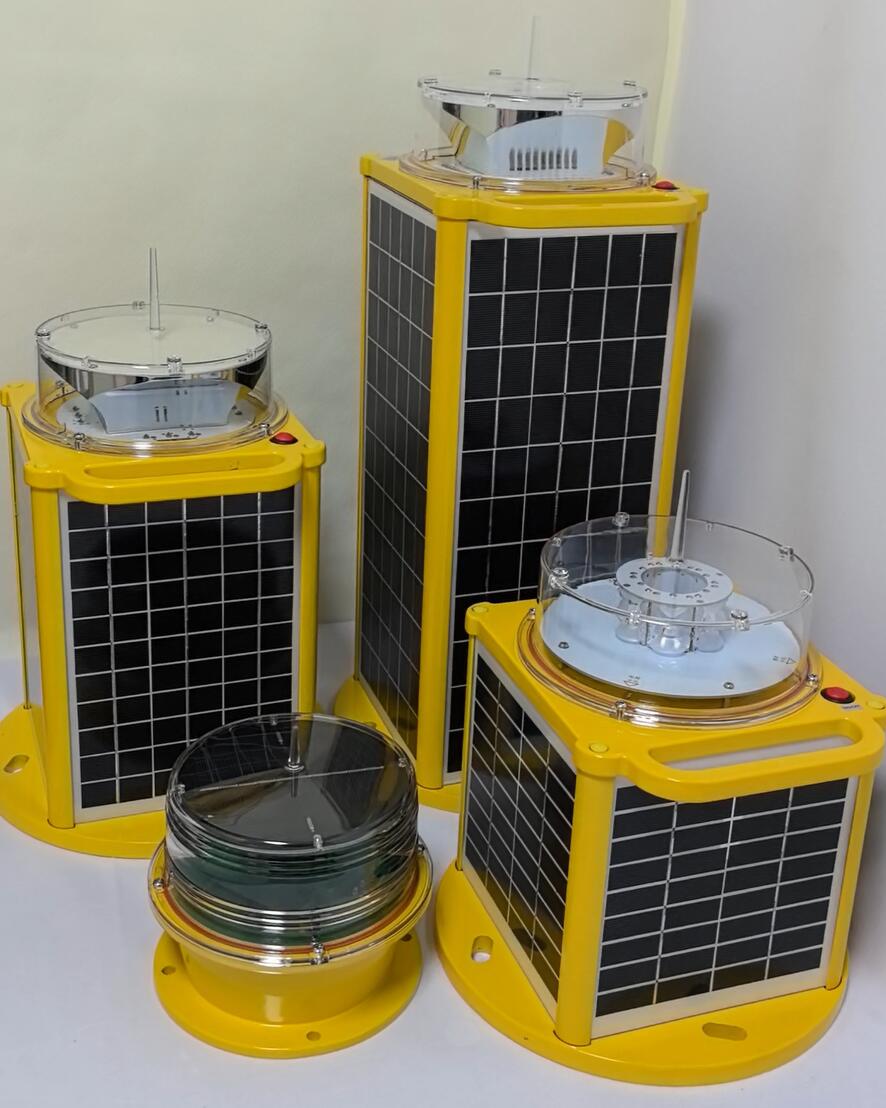Solar Marine Lights: Revolutionizing Waterway Safety with Green Technology
The maritime industry is witnessing a quiet revolution as solar marine lights transform traditional navigation and safety systems. These self-sufficient lighting solutions harness solar energy to illuminate ports, channels, and offshore installations, offering an eco-friendly alternative to conventional powered systems. This article examines how solar marine lights are reshaping maritime operations through innovative technology and sustainable design.
The Environmental Imperative Driving Adoption
Maritime authorities worldwide are embracing solar marine lights to address critical challenges:
Carbon Neutral Operation

Zero emissions during use
No reliance on fossil fuel generators
Alignment with IMO 2030 sustainability goals
| Solar Marine Lights |
Ecosystem Protection
Eliminates risk of fuel spills
Reduces light pollution with directional LEDs
Silent operation preserves marine life
Climate Resilience
Functions during power outages
Withstands extreme weather events
Operates independently of grid vulnerabilities
| Solar Marine Light |
Breakthrough Technologies in Modern Solar Marine Lights
Today's most advanced systems incorporate multiple innovations:
Intelligent Energy Management
Self-regulating photovoltaic panels with 25%+ efficiency
Adaptive charging algorithms for optimal performance
Dual-battery systems with automatic failover
Advanced Materials Engineering
Nano-coated anti-fouling surfaces
Saltwater-resistant composite alloys
Impact-resistant polycarbonate lenses
Smart Connectivity Features
Remote brightness adjustment via satellite
Automated fault reporting systems
Integration with vessel traffic services
Global Applications Transforming Maritime Operations
Solar marine lights serve diverse functions across marine environments:
Port Infrastructure
Pier edge illumination
Mooring area lighting
Hazard zone demarcation
Navigation Safety
Solar-powered buoys
Channel marker lights
Bridge clearance indicators
Specialized Installations
Offshore aquaculture lighting
Research platform illumination
Subsea pipeline markers
Operational Advantages Over Traditional Systems
Maritime operators report significant benefits from switching to solar marine lights:
90% reduction in maintenance visits
5-7 year lifespan with minimal servicing
Instant deployment without cabling
Continuous operation during grid failures
Compliance with evolving environmental regulations
Technical Innovations Overcoming Marine Challenges
Manufacturers have developed specialized solutions for harsh marine conditions:
Corrosion Resistance
Triple-layer marine-grade coatings
Stainless steel fasteners
Hermetic seals against salt intrusion
Storm Survivability
Hurricane-rated mounting systems
Submersible to 10-meter depths
Ice-shedding surface treatments
Winter Performance
Cold-optimized lithium batteries
Snow-shedding panel angles
Low-temperature LED drivers
The Future Horizon: Next-Generation Developments
Emerging technologies promise to further enhance solar marine lights:
Integrated AIS transponders for smart navigation
Wave energy hybrid systems for continuous charging
AI-powered predictive maintenance
Biomimetic designs reducing marine growth
Blockchain-enabled maintenance logs
Implementation Success Stories
Notable global deployments demonstrate real-world effectiveness:
Singapore Port Authority - Reduced carbon footprint by 38%
Norwegian Fjord Navigation - Improved winter reliability
Caribbean Hurricane Zones - Maintained operation through Category 4 storms
Antarctic Research Stations - Provided continuous lighting in extreme cold
Lighting the Way Forward
Solar marine lights represent more than just an alternative lighting solution—they embody the maritime industry's sustainable future. By combining renewable energy with rugged marine engineering, these systems address both operational needs and environmental responsibilities. As technology advances, solar marine lights will become increasingly intelligent, durable, and integrated into broader maritime infrastructure. Their continued adoption promises safer waterways, cleaner operations, and more resilient port facilities worldwide, truly illuminating the path toward sustainable marine operations.
